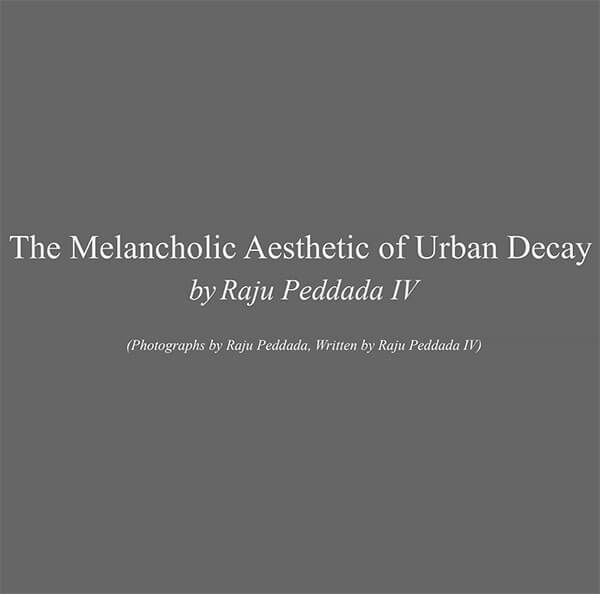I am curious to find what lies in abandoned places... there's a suspense, some surprise waiting in the dark, some unknown
scary thing... - Atman Peddada, 14 years old, younger brother to the author
As a father of two adventurous teenage boys, I am always under a challenge to find non-plastic, uncontrived, natural meaningful
excursion in the urban environment, to expand their scope of learning and sharpen their senses, by virtue of observation and
corporeal experience. Such adventures out of their comfort zones, despite the risk, burnishes their minds. It enables a better grasp of the
inexorable phenomenon of decay -- and the beauty intrinsic to it.- Raju Peddada, Dec. 29, 2019, 2.46 PM
Everything, within itself contains its own opposite... without disharmony there could never be harmony...the unity of
opposites. - Lajos Egri, 1888-1967, Author/Literary Critic,
The Art of Dramatic Writing
Hey, Raju baba, we have all these pictures from Gary and the 18th Street (Chicago) I want to do an article, any suggestions for what the
title should be? A few moments of silence followed as I thought about it.
Well, the aesthetic of - of decay, I offered, reluctantly. My
father's response,
Oh, it's perfect!
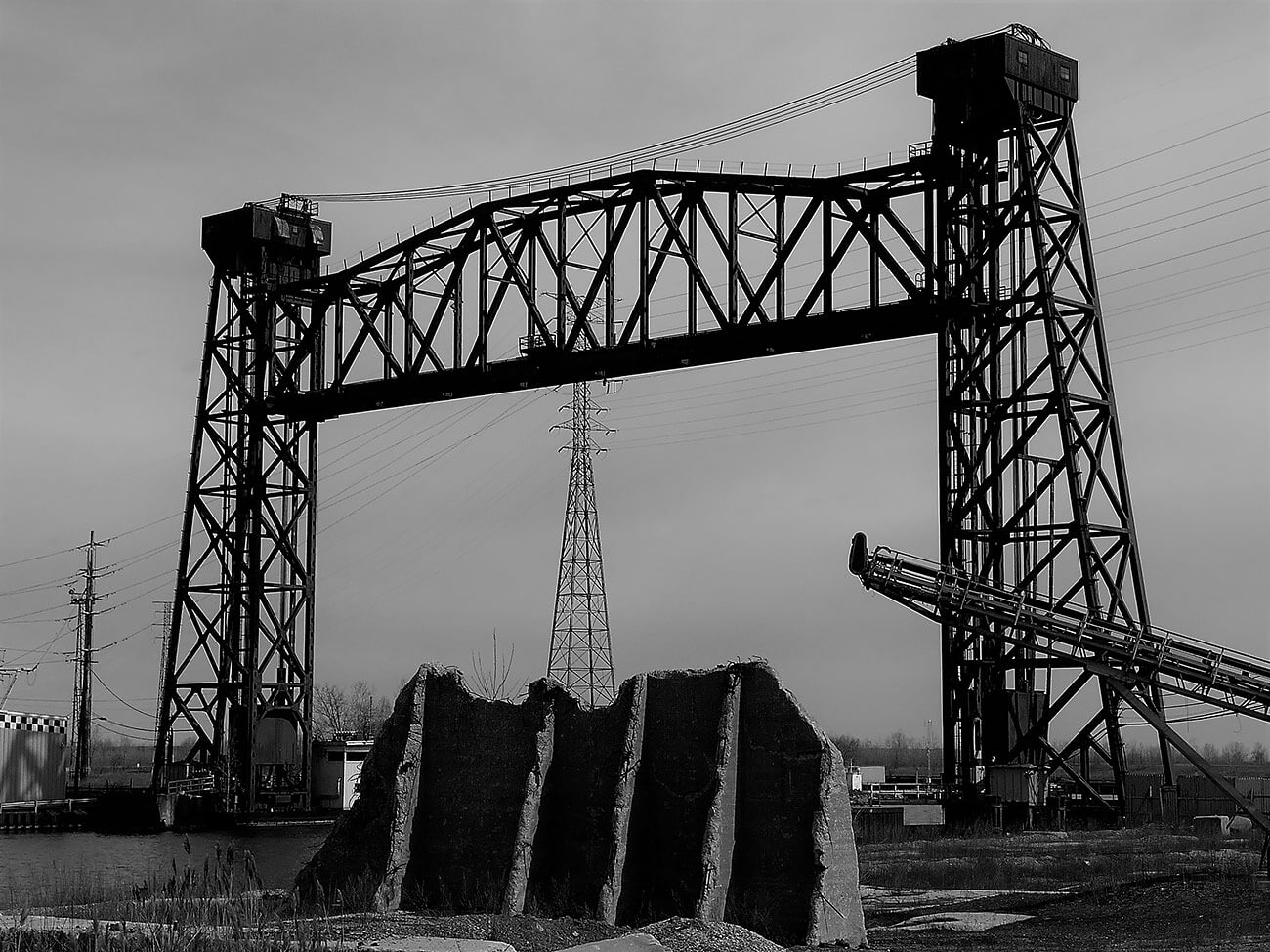
Drawbridge 95th Street© Raju Peddada
I thought I had escaped with this apt answer, it turns out that wasn't the case. My father approached me a few days later with a sardonic
smile, notes in hand.
Boy, I've been thinking, since you came up with the title for my article, why don't you write it? I sighed deeply, in
exasperation. On reflection, I realized that perhaps this could be another meandering into a subject that I like. Decay certainly has its allure,
but why it possesses such magic is a matter of philosophical aesthetics. My father always professes that beauty is the core value of all living
organisms, that Darwin had somehow missed - and the bedrock of the modern industrial economy. Here's how he sees it:
I find beauty everywhere. The beauty of innocence and curiosity of youth, as in my teen sons, is of great contagious energy that renders me
into a wondering boy. The beauty of the youth is only one facet. There is the beauty of nature and ancient ruins, essayed as asymmetrical
aesthetic of nature, explained by the Zen philosophy, and men like Constantin-Francois de Volney. There are our arts, representational
experiences we create to be closer to reality through our abstraction of it. Then, there is the aesthetic of aging, decay and death, a universal
phenomenon: beauty inherent, in the transition of the constitution of materials, organic and inorganic, that manifest in fundamental change, as
in colors, smells, textures and tastes that effect our senses. The anti-aesthetic induces the aesthetic, both aspects are within ourselves.
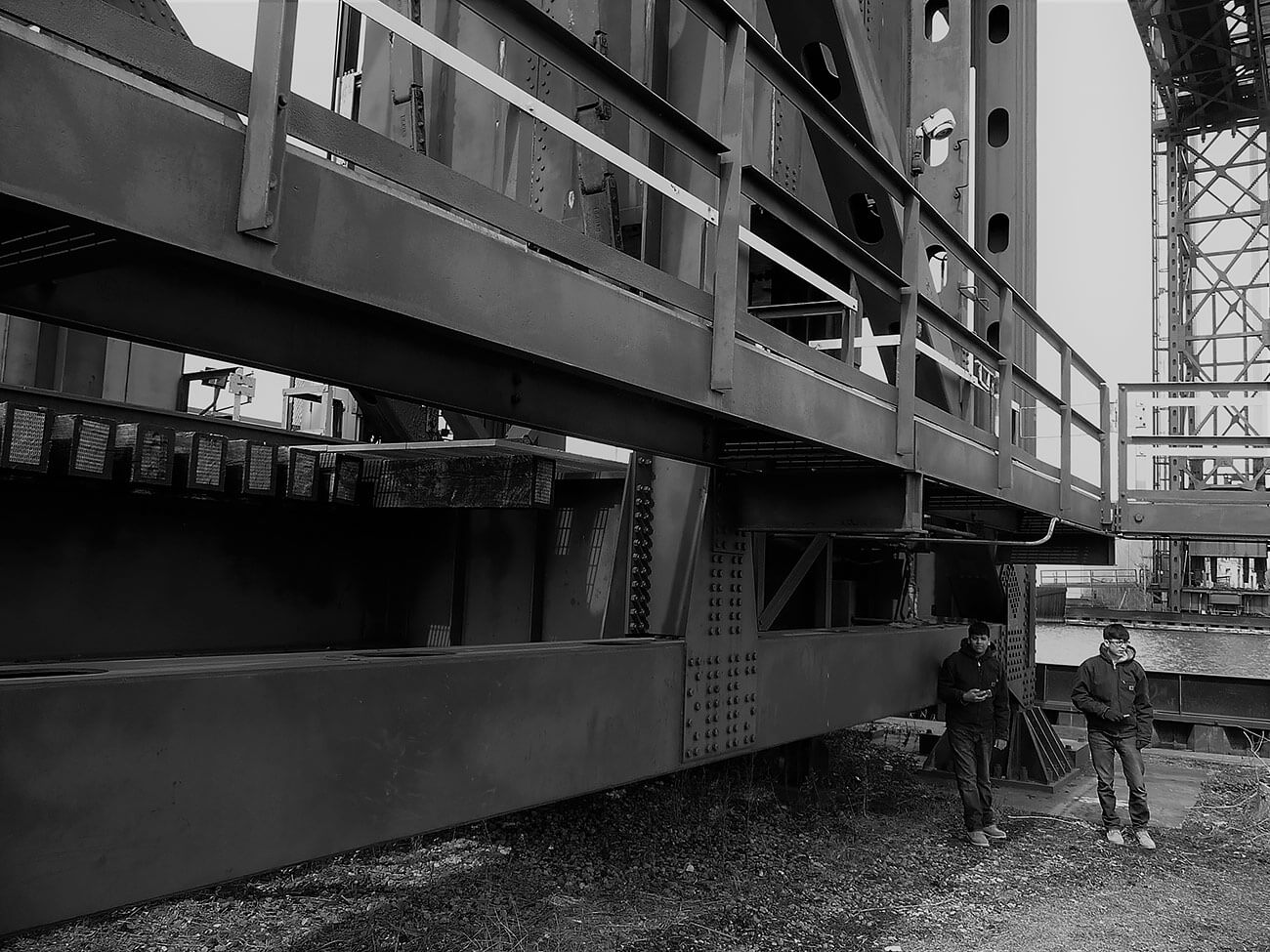
1st Drawbridge Base 95th Street © Raju Peddada
Decay, is a process with no cessation, an unstoppable process that includes all organic life, as well as the inorganic. From the time you are
delivered, you are absorbed into the process of decay, all the way through to your demise, at which point, whether you are buried, cremated,
or mummified, you will return back to the base elements from which you were created. On our walks with him, we used to observe the
conquest of decay over an iron plate. Laying in the same spot for many years, the shiny bluish paint of the plate was soon interrupted by tiny
red blotches that spread across its rough flaky surface. We saw the same plate a few years later, the rust spots now bigger with veins, satellites speckling and cracking what remained of the smooth paint. A further few years, and the plate was no longer a sky colored anomaly among the green surroundings. It now sported a ruddy surface, totally rusty. A process that began in my toddler years, and continues on in
my teen years, and a few away months from college.
Decay is an unrelenting logic, it offers no clemency, but as a consolation, it reveals a moving beauty unlike anything contrived or intended.
In humans, decay is both, a physical, as well as a metaphysical process. Physical decay is obvious, as I see it in my grandmother, who is 83,
yet beautiful. On the other hand, metaphysical decay is a far more sinister and frightening specter to humans. As an example: the decay or
corruption of leaders, or political institutions leads to chaos, anarchy, and totalitarian outcomes. Similarly, the decay of the family structure,
consequences individual ethics and morals to slide down to fatal outcomes. Political decay, unethical or ideological, often seeds industrial
decay. It's all around us.
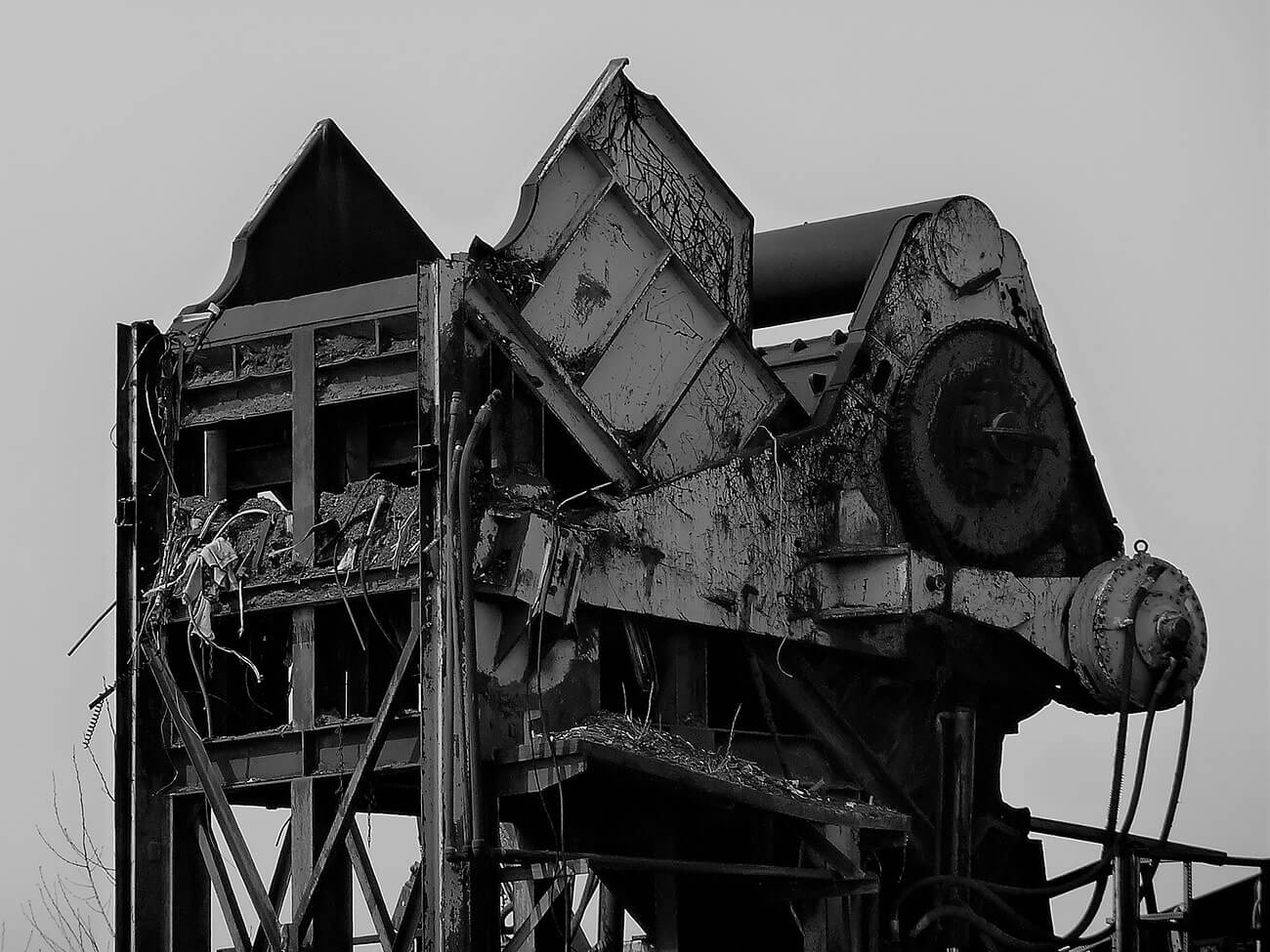
Mill Machine Factory collapsed 95th St. © Raju Peddada
Industrial wastelands are symptoms of intended or unintended human errors, planned obsolescence, corrupt policies. These locations are
found in the heartland of America, places like Detroit, Cleveland, and Gary, and within many other advanced industrial societies. Such
places, regardless of how they came to be, develop curious textures and atmospheres that induce suspense and fear, and simultaneously
captivate the aesthetes. The danger is conversely proportional to the beauty of such places -- in the unknown, and constantly unfolding
textures. One such place created by human conceit and error is Chernobyl. Despite restricted access and the frightening mutations of
organisms there, it is a magnet to the camera-wielding aesthetes and adventurers looking for the weird and the sensational.
As we drove around the southern bend of Lake Michigan, we weren't entering a radioactive zone, but an industrial wasteland. The rust belt
of the Midwest began at 95th street, by the Calumet river. After exiting there, as we emerged from under the viaduct, and there it was. A
drawbridge, a macabre steel colossus that loomed defiantly like some mythical guillotine, ready to sever and dispel our urban boredom. We
realized that all the places we were hoping to explore happened to be private and or governmental properties, which meant that we had to
trespass. And, trespassing is the harbinger of adrenaline. And to my father: the aesthetic fiend, this was heaven.
And trespass we did, through the Union Pacific property to access the first smaller drawbridge, which from afar, looked rather skeletal.
However standing next to it, we were but small blemishes upon its red frame at the base. We then stole into a nearby compound that lay just
behind the drawbridge. Upon entrance, the first thing that accosted me, us, was this structure, an inscrutable ten story melange of metal,
imposing and ominous. The building that housed this machine had collapsed long ago. The ground was heaps of debris, of twisted wire,
strange shapes in metal, stuck cinder blocks and concrete slabs around the defiant machine. And I can only imagine the ecology underneath
all that debris.
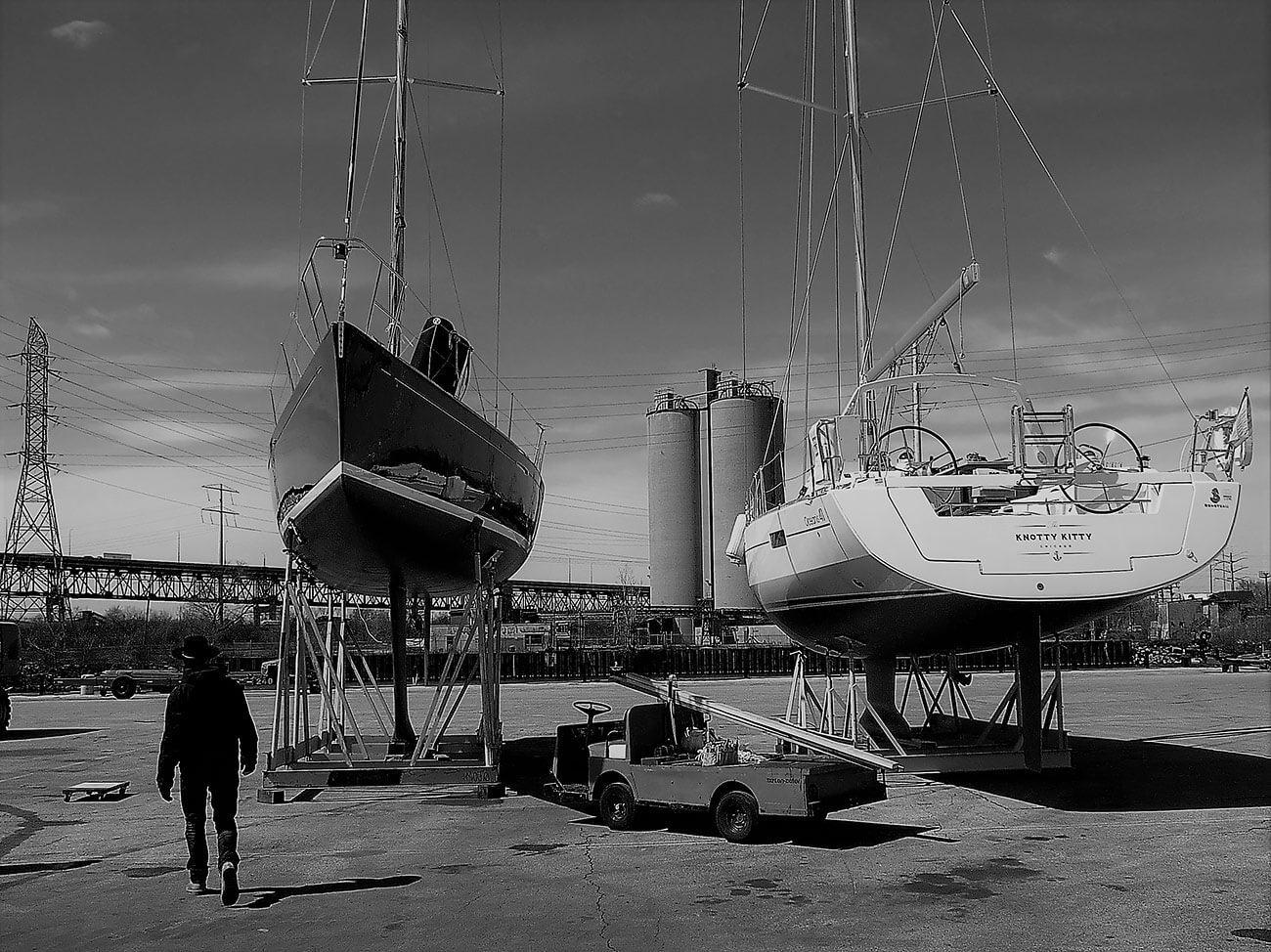
Author thru boatyard 95th St.© Raju Peddada
From the compound, we trekked towards the freshly painted 95th street bridge. Across the bridge and to the left, on the banks of the river,
we came upon a fish shack. The smell from the shack wilted my dad, a vegetarian, while it churned our stomachs with hunger. At the end of
our conversation with the attendant of the smoke house, he claimed to have figured out our father's origin. Pointing to him, he said,
You, I
think are a gypsy! As compensation for his claim, he gave me and my brother a sampling of his smoked delicacies. And while we enjoyed
the fish with fries, we gazed at the distant guillotine: the huge silhouetted drawbridge.
To access this rusted hulk of steel, we needed to navigate the boat storage yard that lay before it. We entered through a nearby fence,
trespassing from one private property to another, skirting around the shallow puddles that dotted the gravel path. Dozens of boats were scattered throughout the yard, under a forest of masts. As we trudged under the maze of hulls, there were few people having picnics aboard their vessels. We eventually spilled onto a rubble laced bank that overlooked the remains of decrepit hundred year old wooden piles driven
into the river long ago to guide the coal and ore ships from hitting the bridge pylons. To our left was this bridge!
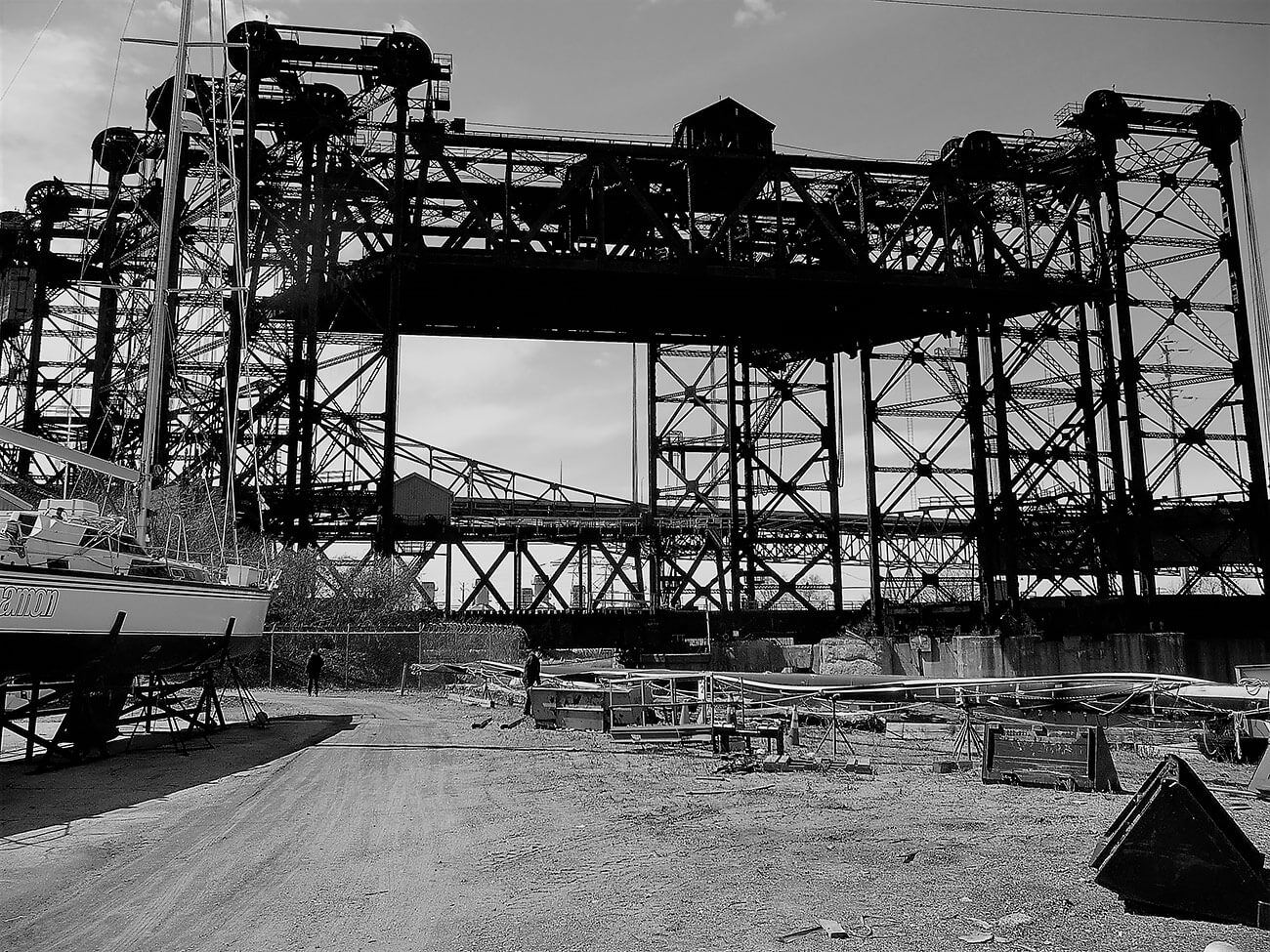
Old Drawbridge 95th St. © Raju Peddada
The back lit mass of cross-hatched metal was a dark character. I was expecting it to unfold and assume another shape, like a Transformer.
The drawbridge was in the down position, having remained so for almost four generations. The old rail lines on its bedding were suspended
on several taut steel wires by a pulley system on each side, that was probably run by massive electric motors, long frozen into obsolescence.
We stood there, absorbing the details of this monumental nineteenth century engineering feat.
But, what satisfied our curiosity was Gary, in Indiana. A mid 20th century ghost town, where we felt many wandering spirits and shadows of
the people that had worked there through the generations. And, the ones we saw flitting about the dead downtown were no different. It was
surreal. The main thoroughfare, that once glittered with life, was all shuttered and scary. A crumbling mansion across the boarded up retail
facility lured us in. As we climbed the mossy stairs, the flaking patina and the crumbling walls loomed over us, as if they would topple on us
the moment we stepped on in. At the threshold, the scene was a theatrical setting: rays of light streamed through the broken windows, falling
on the two grand staircases, that led down to a white grand piano. A setting for a concert, it was as though we stood upon a grand stage. But
who was the pianist? Where was the audience?
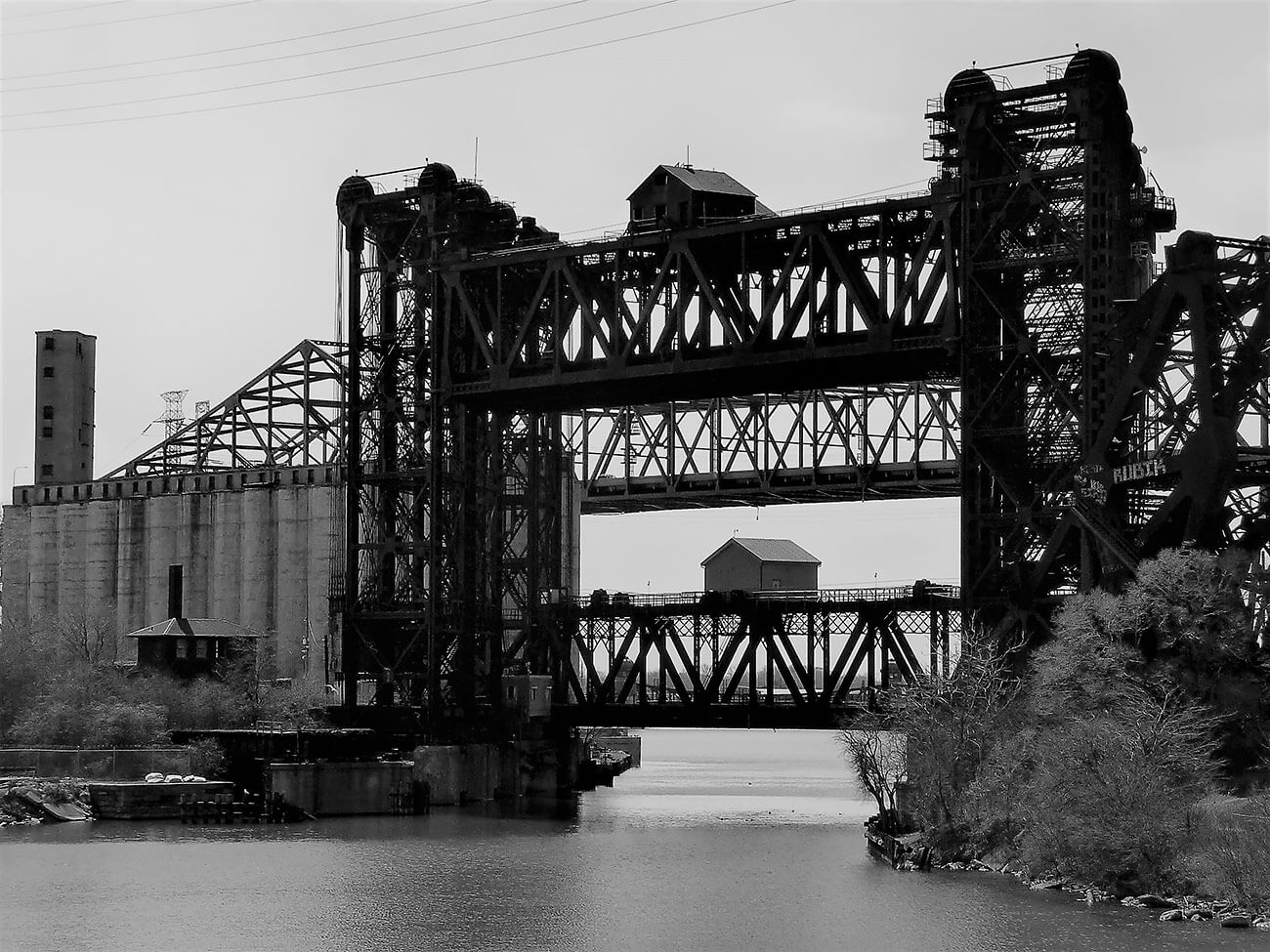
Old Drawbridge from distance 95th St.© Raju Peddada
The next setting down the block was a theater, a rather large building, with a small tree growing on the roof. We, like old producers, made a
back stage entry, and were thrust into an eerie void in front of an invisible audience. Once adjusted to the light inside, what we 'felt' was
macabre, a mayhem of materials and specters. The balcony hung precariously over the main floor, almost ready to collapse on it, strewn with
debris and an unknown ecology. What was truly frightening was the stage, where Jackson Five might have gotten their start. It was covered
with newspapers, torn curtains, a collapsed piano, and dust coated plywood, disguising the trap doors that descended thirty feet to the
basement, filled with stagnant water - one misstep, the plunge could've dropped us into the company of waiting extras, in their eternity.
Oddly enough, and totally unplanned, our exploration began at the mansion with the piano, then to the theater, and now across the street, a
strange sight, a shop with wigs and masks that seemingly were leering at us through the windows. When we entered the shop, an oriental
couple, (Chinese, Korean?) sternly forbid us from taking pictures, nor was anything for sale -- they shooed us out quickly. Was this some
kind of a message? I wondered, a front for something insidious? Why, what we saw were all theatrical settings?
When I mentioned these coincidences to my father, he said,
Is life not a theater? The rust belt: a theater of textures and decay. The
threatening drawbridges, like revolutionary guillotines, the grimy and grim USS Steel complex with its zombies, and the E. A. Poe-ques
Gary downtown, all, theaters in their own right. Our only compensation in this unfolding theater was the factor of beauty, in a myriad ways.
Finally, one last thing, our father photographs us: me and my brother, not for a family record, but as a human element and condition. We
often appear undefined, silhouetted, and ambiguous, at one with the environment, except for the title photograph. This is what he always
wants to achieve, because, he always insists that life is nothing but an ambiguous theater.
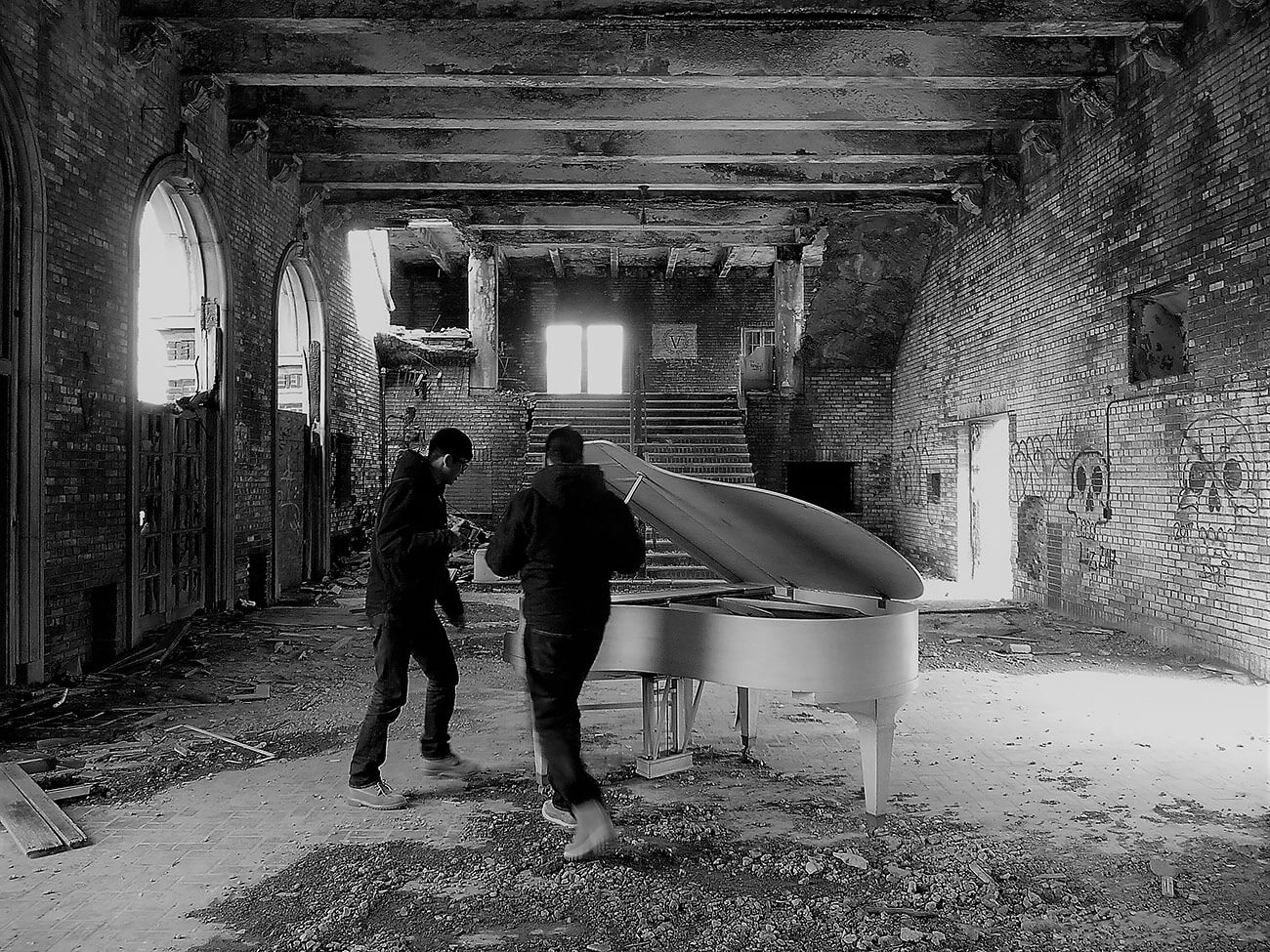
Author & brother surprised with piano in ruins Gary IN © Raju Peddada
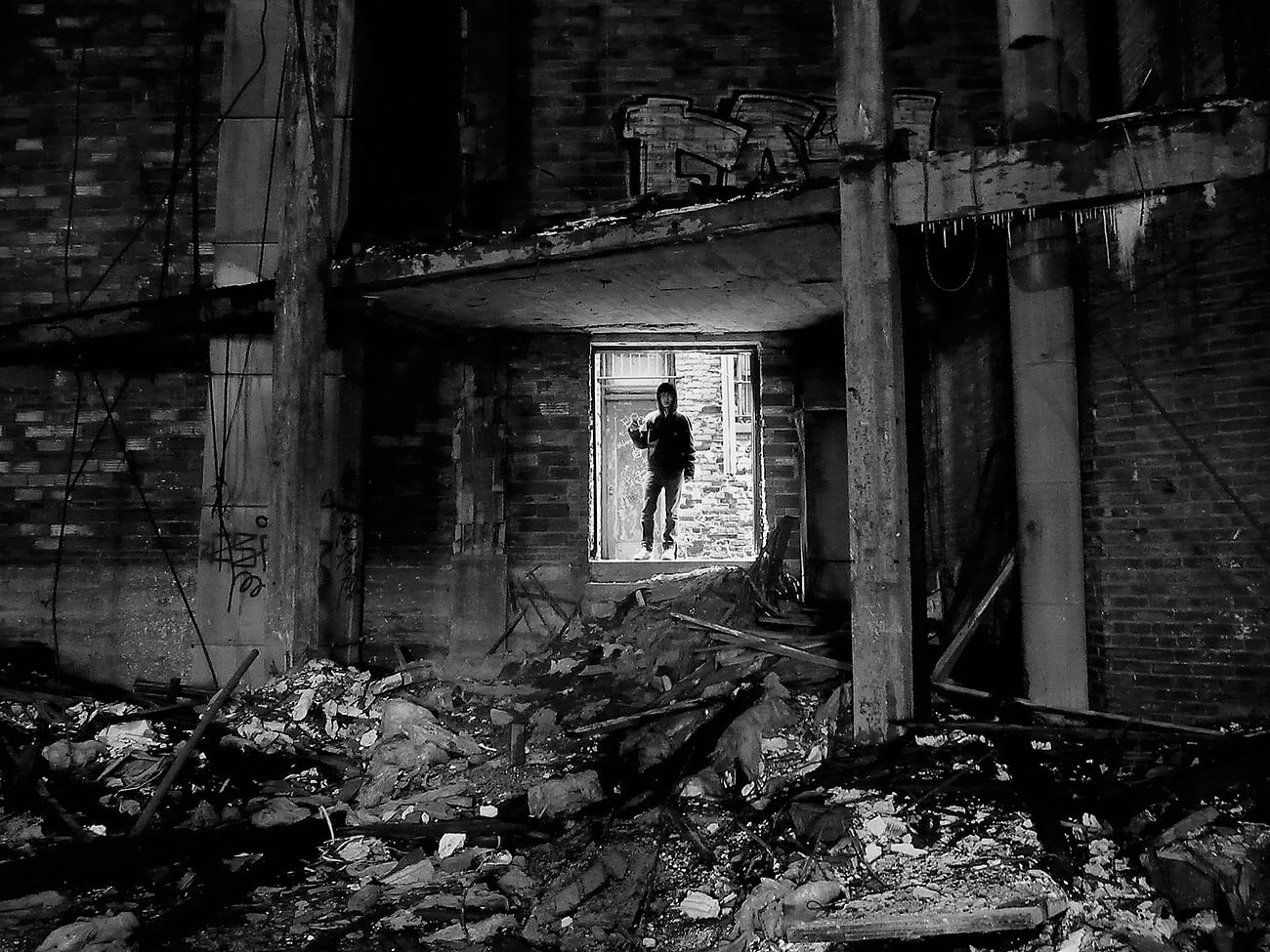
Jackson 5 Theater side entry Gary IN © Raju Peddada
Several deaths in the family, and one of a young friend, who passed away suddenly, at forty-seven, had induced this theme of decay and
death. The syllogism of age, decay and death is not just a human condition, but a universal one, that is inexorable and unavoidable even to
the toughest of materials. Death is a relative concept - as philosophers would debunk it for a Platonic truth, which is merely a transition from
one state to another. This maybe disagreeable to many of us, but in material terms, it's incontrovertible. The scene is Chicago, a classic
modern metropolis, with its satellite towns, where the Industrial Revolution reached its zenith in the last decade of the 19th century. Old
warehouses, industrial buildings collapsed, machines still intact and standing, rusted rail lines and implacable bridges still punctuate the area
defiantly. Old buildings are being torn down to make way for new complexes, but metal bridges are another thing. They don't collapse at the
strike of a 5 ton ball, they are thick, bolted, oxidized and fused, rigid, heavy and utterly expensive and laborious to dismantle. It would take
millions of dollars to dismantle just one, and so they stay, like snickering Victorians at the 21st century. If Chicago is a beast, the rust belt to
the south and below is like its gangrene tail, infected and decayed - the trick for Chicago's political elite is to avoid that gangrene to spread
upwards to the main body, in what looks like an uncertain future... in all of this uncertainty, there's one reliable thing: beauty, and the beauty
in decay is something fundamental I want my boys to grasp, just in case only decay is our future.
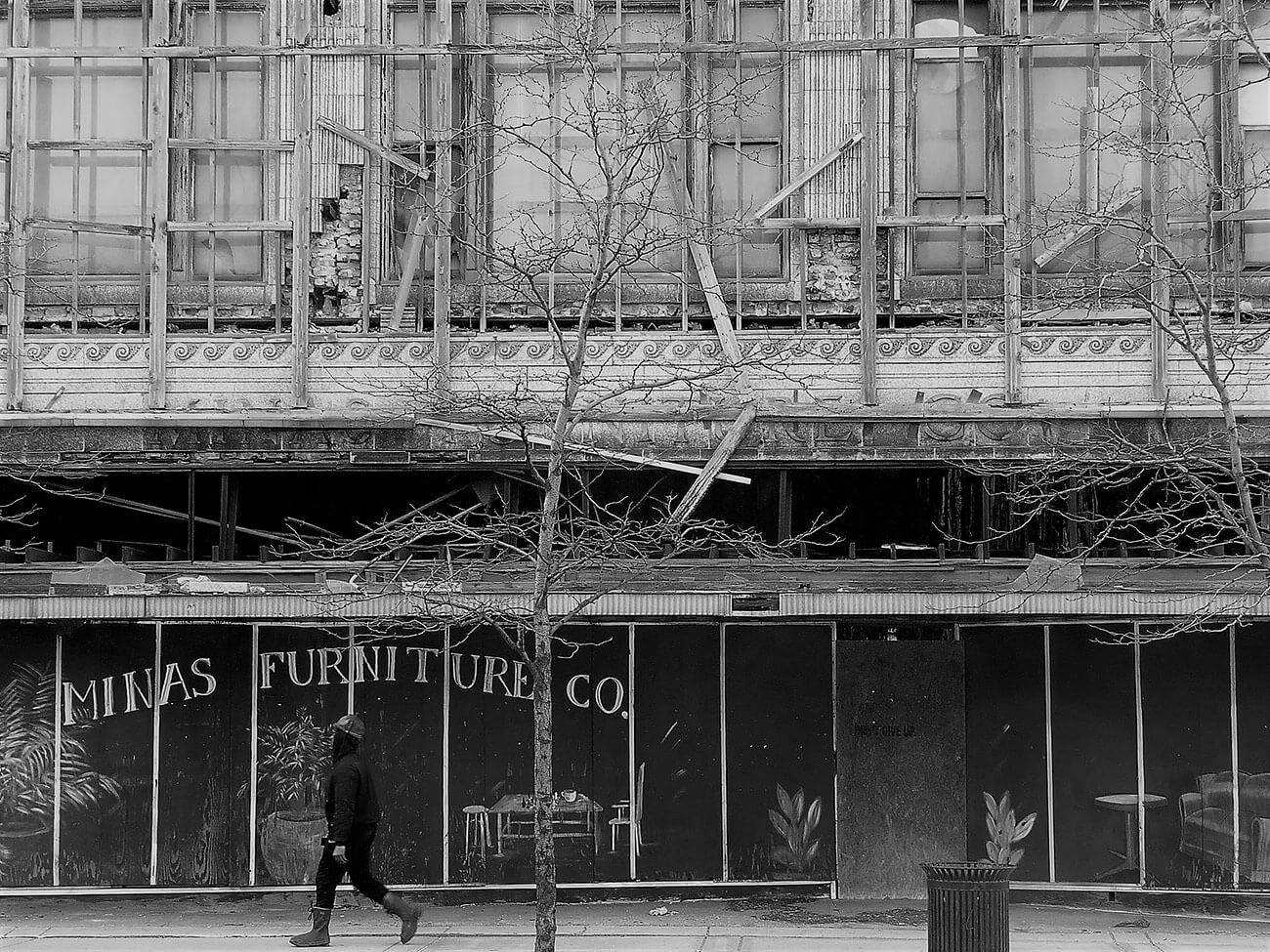
Author & brother surprised with piano in ruins Gary IN © Raju Peddada
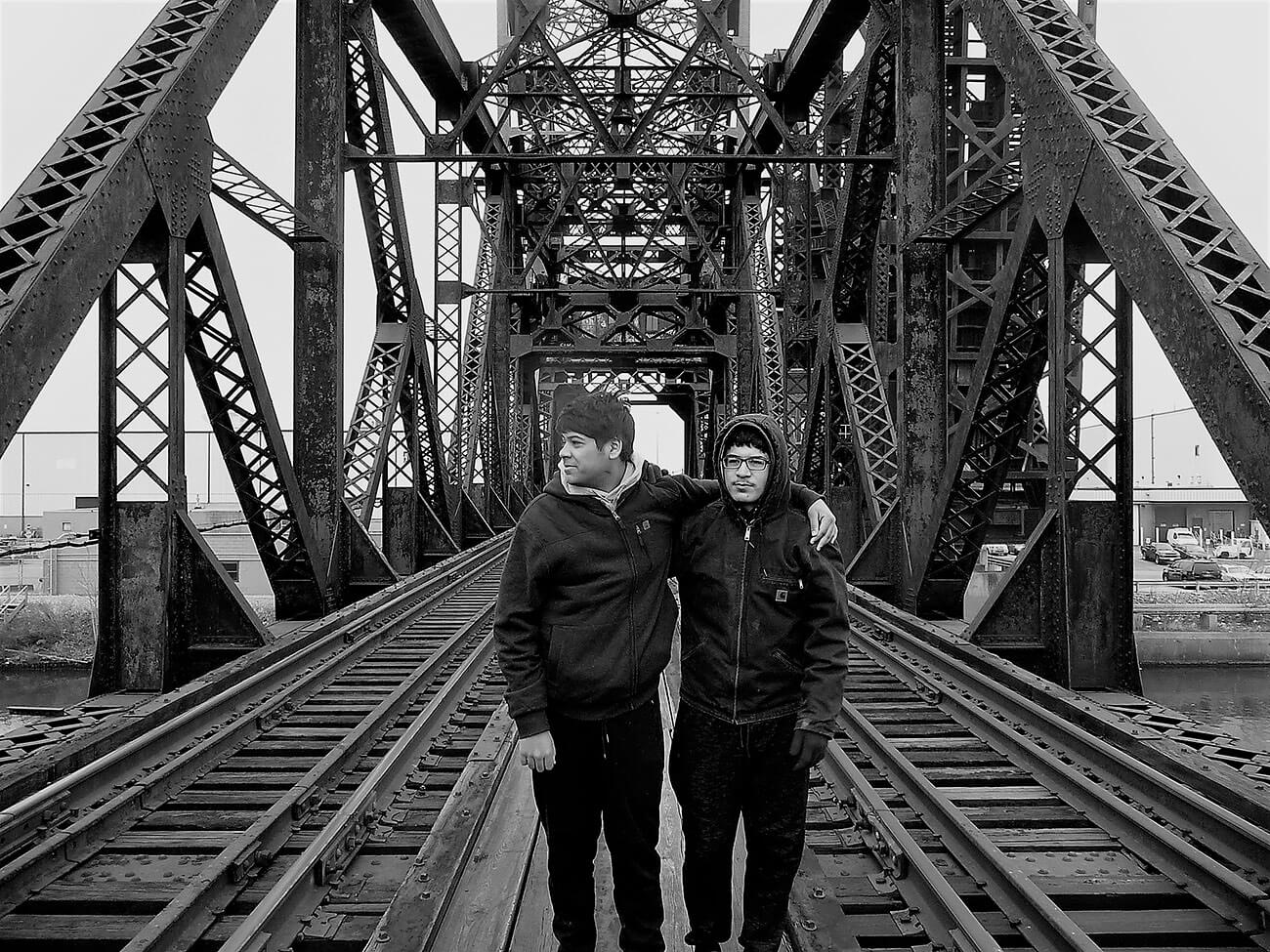
Peddada brothers Author with Glasses on 18th St Bridge© Raju Peddada
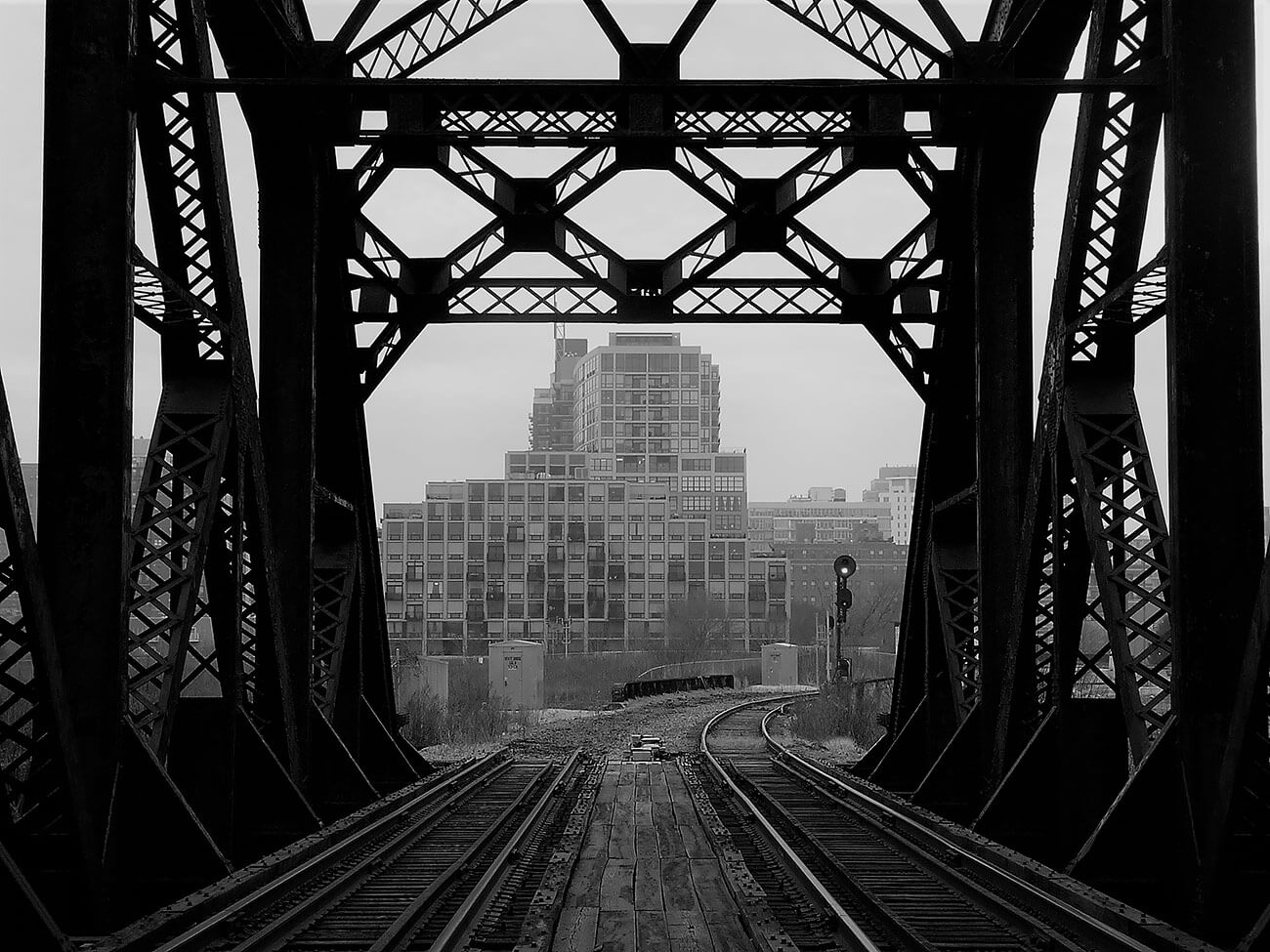
The Old frames the new 18th St bridge © Raju Peddada
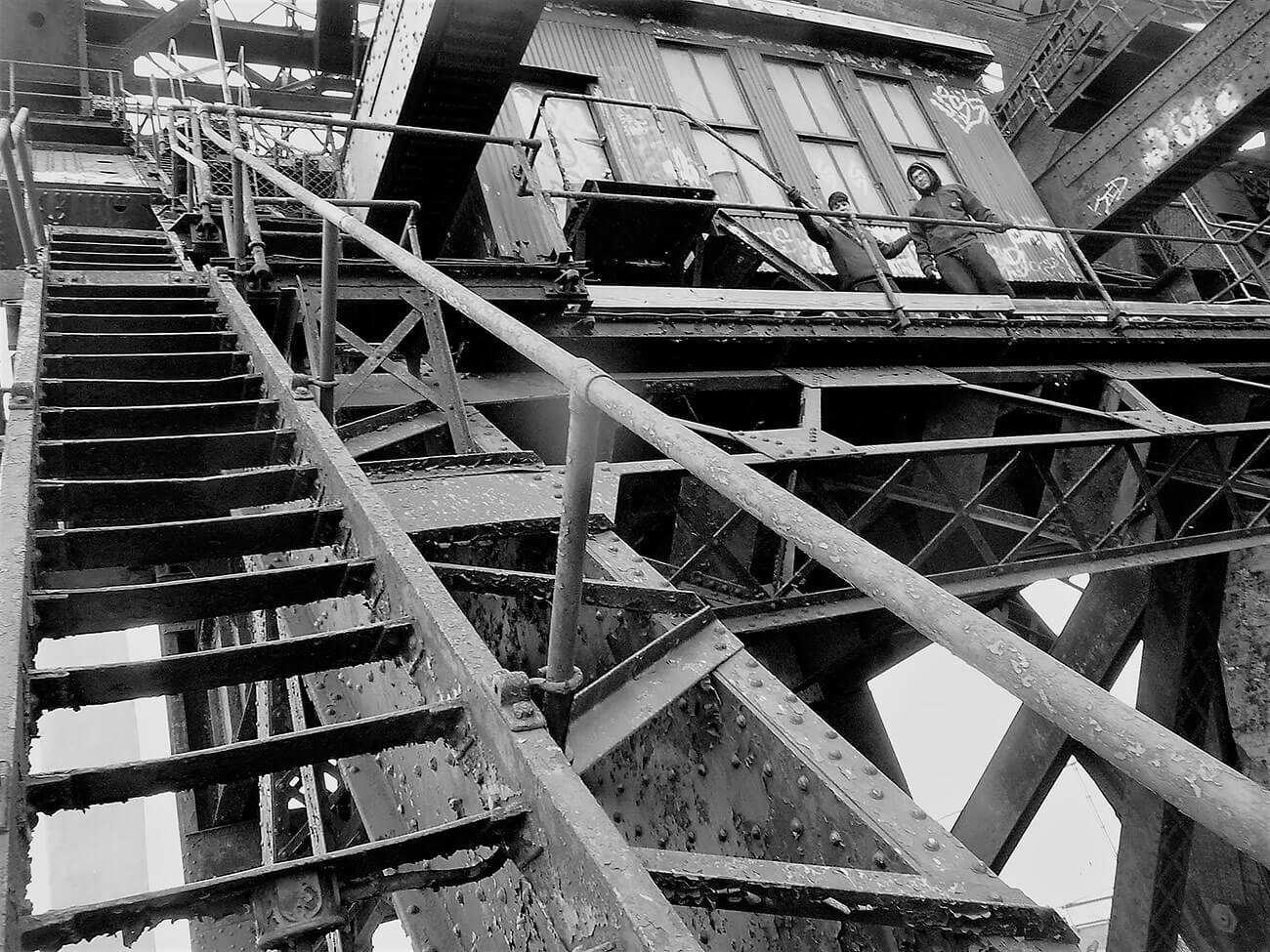
Boys atop the rusted neglected 18th St Bridge © Raju Peddada
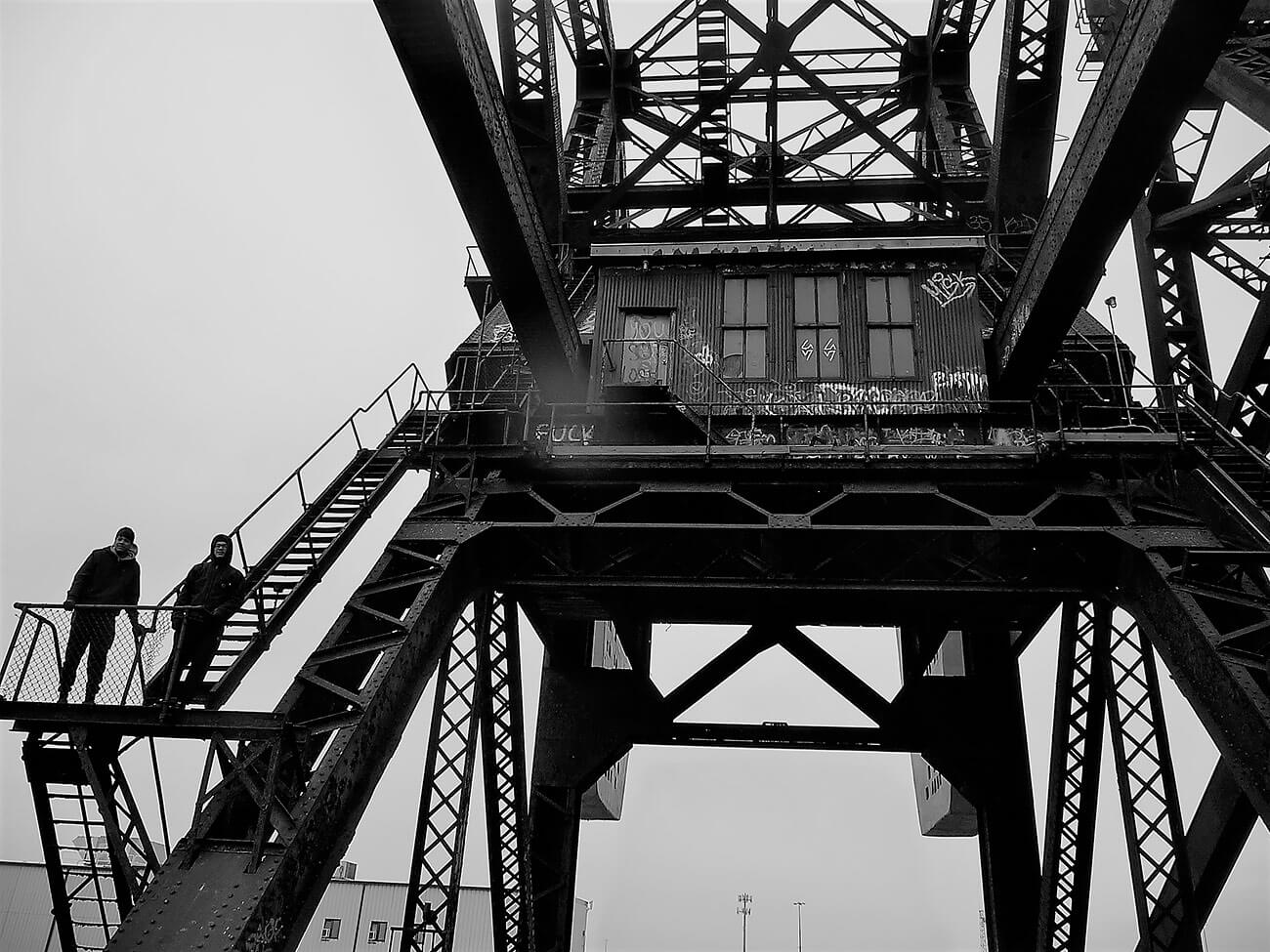
Boys ascending the dangerous bridge © Raju Peddada
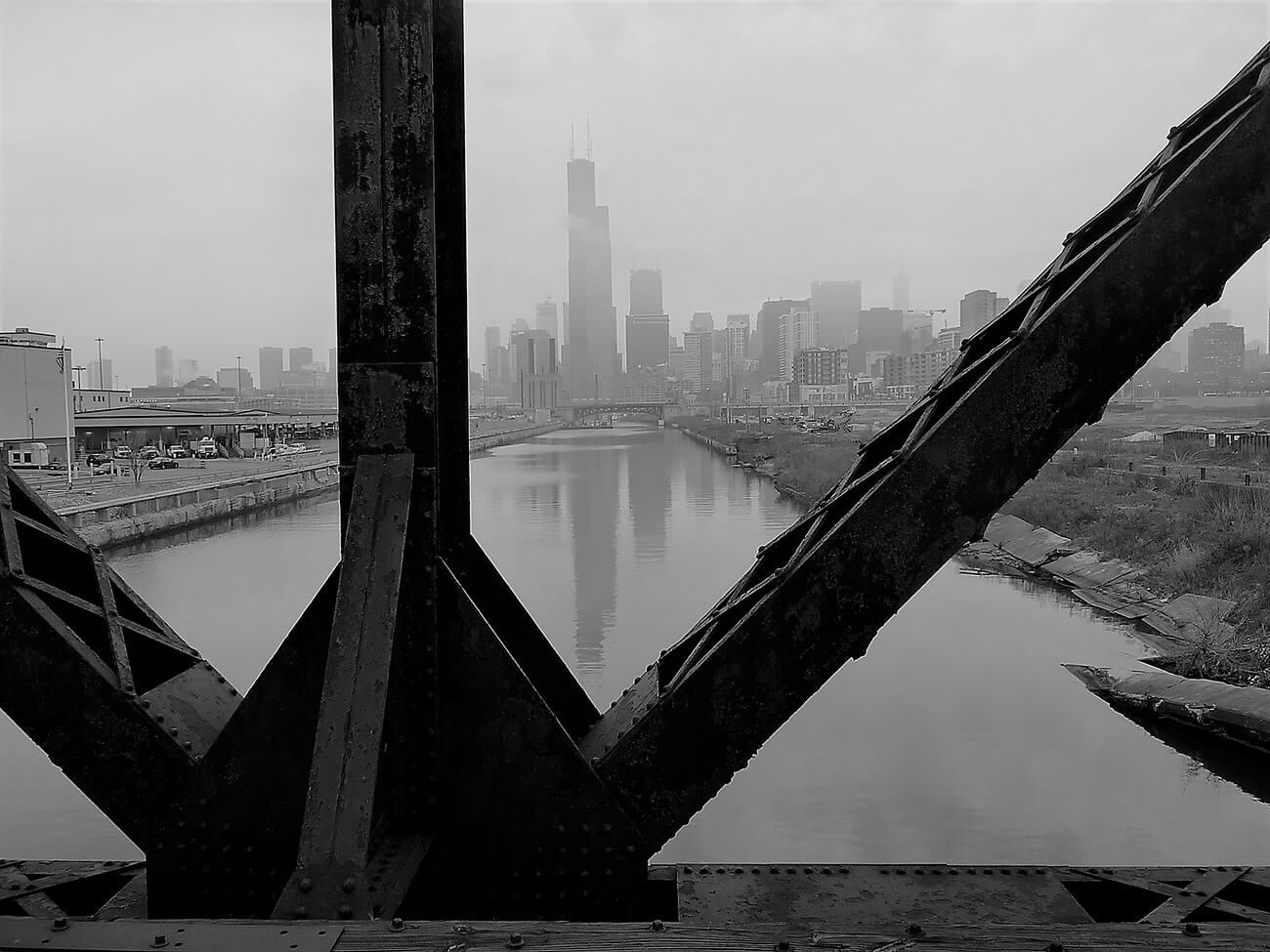
SearsTower Chicago tallest for the longest time view from top © Raju Peddada
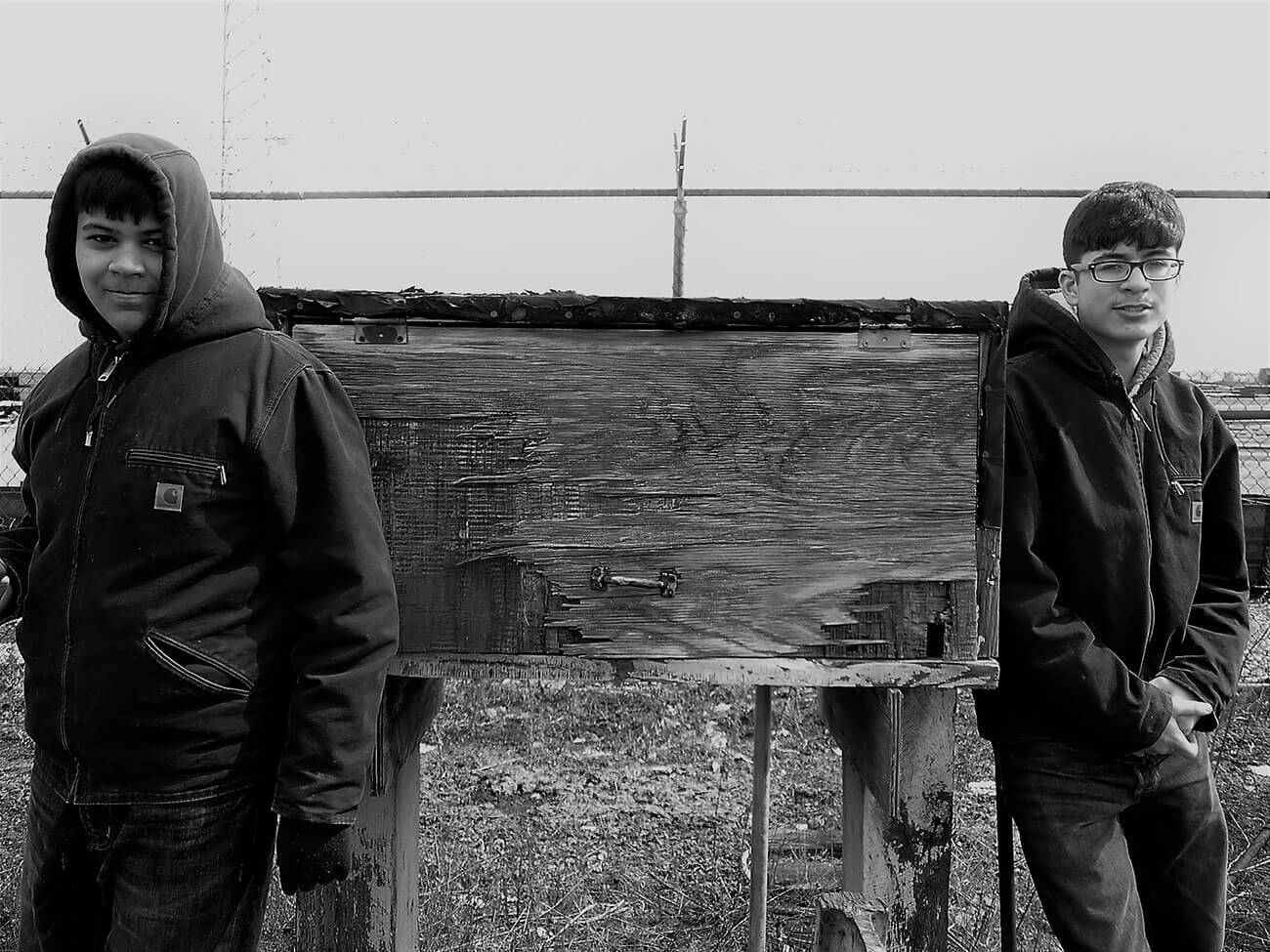
Author & brother at Union Pacific tool box 95th St © Raju Peddada
